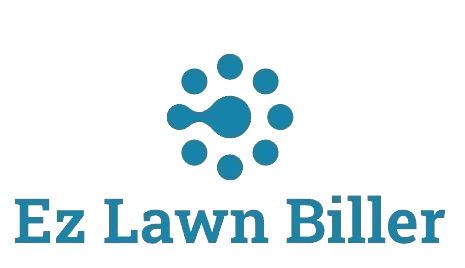Avoid These Common Use software effectively Mistakes
Avoid These Common Software Effectively Mistakes
In today’s fast-paced digital world, utilizing software effectively is crucial for maximizing productivity and efficiency. This blog post addresses common mistakes made by users and provides insights on how to harness the full potential of software tools for your business. Learn how to avoid pitfalls and streamline your processes.
Introduction
In the era of technology, software has become an integral part of everyday operations for businesses of all sizes. However, many users struggle with effectively utilizing the tools at their disposal. The way we interact with software can directly impact productivity, accuracy, and overall success. This article will delve into common mistakes people make while using software and provide practical tips to enhance your usage.
Understanding how to use software effectively not only saves time but can also reduce errors and improve customer satisfaction. Furthermore, as businesses look to grow, the right software can be a game-changer. Let’s explore some of the most common software mistakes and how to avoid them.
Neglecting Training and Onboarding
One of the most significant mistakes users make is neglecting proper training and onboarding. Many assume that simply purchasing software equips them with the necessary skills to use it effectively. However, without adequate training, users may not fully understand the software’s features, leading to inefficient use.
For example, consider a lawn care company implementing new lawn billing software. If the staff does not undergo proper training, they may overlook essential features such as automated billing and customizable invoices that could streamline their operations. According to a study by TechPro Research, 70% of employees say they don’t have the necessary training to use their company’s software effectively.
To avoid this mistake, businesses should invest in comprehensive training sessions. Utilize tutorials, webinars, and hands-on workshops to ensure that all users are confident in navigating the software. This investment will ultimately lead to increased productivity and reduced frustration.
Ignoring Software Updates and New Features
Another common blunder is ignoring software updates and new features. Software developers frequently release updates to improve functionality, security, and user experience. Failing to keep software up-to-date can leave businesses vulnerable to security threats and hinder their ability to utilize the latest features.
For instance, many lawn service software providers, such as EZ Lawn Biller, regularly introduce enhancements that can significantly benefit users. By not updating, businesses miss out on automated billing processes and new reporting tools that can provide valuable insights into their operations.
To stay ahead, organizations should establish a routine for monitoring software updates. Designate a team member to keep track of changes and ensure that the software is always operating on the latest version. Embrace new features by hosting team meetings to discuss how they can be integrated into existing workflows.
Overlooking Integration with Other Tools
Many users overlook the importance of integrating software with other tools. Many software programs, including lawn service apps, can work seamlessly together to create a more efficient workflow. Failing to take advantage of these integrations can lead to data silos and duplicated efforts.
For example, a lawn company may use a separate customer relationship management (CRM) system alongside its billing software. If these tools are not integrated, employees may spend time manually transferring data between platforms, increasing the risk of errors. According to a report by ZDNet, 56% of businesses report inefficiencies due to poor integration of software tools.
To overcome this challenge, evaluate how different software applications can complement each other. Look for service company software that offers integration capabilities or APIs to streamline operations. By connecting tools, businesses can enhance collaboration and ensure data consistency across platforms.
Failing to Customize Software to Fit Business Needs
Another prevalent mistake is using software as-is without customizing it to fit specific business needs. Many software solutions offer customizable features, yet users often stick with default settings that do not align with their workflows. This approach can lead to inefficiencies and frustration.
Take, for instance, a lawn service company that uses a generic invoicing template. If the template does not reflect the company’s branding or does not include essential details, it may confuse clients and diminish professionalism. Customization options, such as those found in lawn company apps, can enhance brand identity and improve client interactions.
To ensure optimal use of software, take advantage of customization features. Tailor templates, reports, and dashboards to reflect your business’s unique branding and operational requirements. Regularly assess whether the software is meeting your needs and make adjustments accordingly.
Neglecting User Feedback
A critical oversight that many businesses make is neglecting user feedback when it comes to software usage. Employees often have valuable insights about their experiences and can provide suggestions for improvement. Ignoring their feedback can lead to continued inefficiencies and dissatisfaction.
For example, a lawn care business using a lawn service computer program may discover from their employees that the invoicing process is cumbersome. By actively seeking feedback, management can identify pain points and work with software developers to address these issues. According to a survey by Userlane, 65% of employees believe that user feedback is essential for improving software tools.
Encourage an open dialogue about software usage within your team. Conduct regular surveys or feedback sessions to gather insights, and involve users in discussions about potential enhancements. By fostering a culture of collaboration, businesses can optimize their software effectively.
Relying Solely on Software for Problem Solving
While software is a powerful tool, relying solely on it for problem-solving can lead to complacency. Many users may think that if they have the right software, all issues will be resolved. However, software is just one part of a larger puzzle that includes processes, training, and human input.
For instance, a lawn care business may implement automated billing through their software but face issues with client communication due to a lack of follow-up. Without proactive measures, clients may feel neglected, leading to dissatisfaction. Research from McKinsey shows that organizations that combine software with strong processes outperform their competitors on multiple fronts.
To avoid this pitfall, organizations should strive for a balanced approach. Use software as a tool to enhance processes but ensure that employees are equipped with the skills and knowledge to address challenges effectively. Promote a culture where technology supports human input, ensuring comprehensive problem-solving.
Conclusion
In conclusion, effectively utilizing software is essential for businesses to thrive in an increasingly digital world. By avoiding common mistakes such as neglecting training, ignoring updates, and failing to customize, organizations can significantly enhance their operations.
The significance of using software effectively cannot be overstated, especially for industries like lawn care where efficiency can directly correlate to customer satisfaction and business growth. As you look to enhance your software usage, remember to embrace training, integration, and user feedback.
Finally, take action today! Evaluate your current software practices and be proactive in addressing potential shortcomings. By doing so, you will not only improve productivity but also position your business for long-term success.




